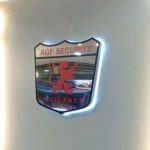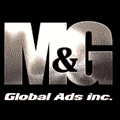
Choosing ADA outdoor signage material
Choosing outdoor signage which product to suggest to customers depends on their spending plan, setting and also design constraints. Yet rate is not the predominant aspect any longer. Quality and efficiency are ending up being larger top priorities as businesses and also institutions accept the truth that Acrylic signage is here to stay. Remember that the material is as vital as the message because if the product stops working, then the message is lost.
Let’s look at several of the extra common products on the market today and also learn which is most proper for various spending plans, settings as well as designs.
Creating for Toughness
Outdoor signage is prone to all sorts of climate and other forms of wear and tear. Outdoor signage, after that, needs materials that will certainly not fade, chip, peel off, delaminate or split. Specialists advise staying with high-impact plastics, metal letters as well as one-piece check in these settings. Single signages are equally as their name recommends ¬ indications made from one piece of product so that mischief-makers can not get rid of letters.
” Magnesium is a one-piece ADA product,” states Kathy Wilson, representative for Breakthrough Company, a producer of architecturally made interior/exterior way-finding signages systems and also conventional and also customized ADA-compliant check in Cottage Grove, Minn. “We suggest utilizing magnesium product in exterior and interior settings that are sturdy, have extreme cleansing requirements, and also are vulnerable to graffiti, such as colleges and also universities, resorts, as well as hospitals.”
Walter Hersey, owner of Tactile Outdoor Signage in Brandon, Fla. recommends a sandblasted plastic material called melamine for high schools as well as prisons, where pupils are recognized to ruin signs. Melamine is a thermosetting plastic. It is solid, light-weight and also hard, however can be scratched or broken or fractured. It resists acids and also alkalis. With melamine, mischief-makers can not remove the graphics ¬ even with a razor blade. Institution of higher learnings, claims Hersey, tend to like one-eighth inch acrylic due to the fact that university student aren’t commonly as devastating and also it is less expensive than melamine.
Zinc is an additional material that is well suited for exterior environments. Like magnesium, Wilson suggests zinc for settings that are exceptionally hard, have too much cleaning needs, and also are susceptible to graffiti. Yet she says zinc is commonly used for ADA signage in transit systems, prisons, sporting activities facilities as well as hospitals.
” One of the most long lasting item for train systems is one-piece metal signs, like zinc or bronze, with chemically engraved letters to make sure that the raised letters can not be removed or scratched,” claims Hersey. “This is a more pricey process yet is relatively vandal-proof.”




























